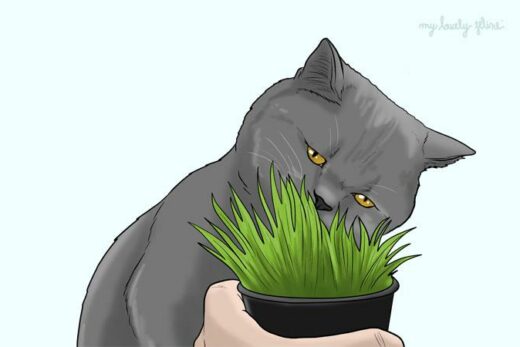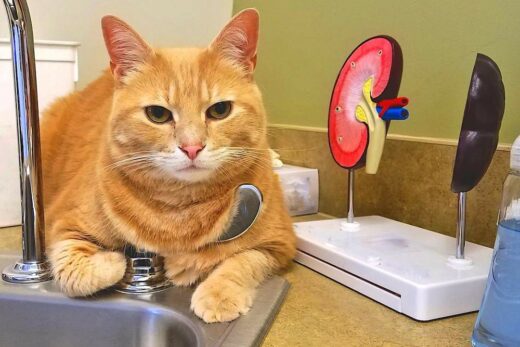While there might be plenty of jokes about fat, obese, or overweight cats online and elsewhere, the health of our feline friends is nothing to laugh about. Obesity in cats is on the rise, and this negative health trend can lead to many consequences for our beloved cats, and for us. If left untreated, an overweight cat’s weight problem will ultimately lead to worse health and lower quality of life. So what can we do to help our feline friends get healthy and lose weight? Read on for more information, or check out our other cat-friendly articles.
Overweight cats: A growing issue
Cat obesity is a growing issue around the world. As people in developed countries have become rounder, so too have our feline friends!
According to a 2018 study by the Association for Pet Obesity Prevention, 59.5% of cats in the U.S. are classified as overweight or obese.
So if you’re wondering if your cat is overweight, chances are they probably are.
But what is obesity exactly? Obesity is the accumulation of excess body fat. Your cat may be overweight, and not considered obese, but still have excess body fat that could be hurting their overall health and well-being.
Yes, #fatcatsneedlovetoo! But not only belly rubs and encouragement. A vet-approved and carefully implemented weight reduction plan is the best way to help your overweight kitty take back their full health.
How do I know if my cat is overweight?
Since images of fat cats in the media are so popular, it might be difficult to tell if your cat’s body weight can be classified as ‘normal’ or healthy. On average, domestic cats should weight about 8 – 10 pounds (3.6 – 4.4 kg). Keep in mind though that the ideal weight also depends on your cat’s age and breed.
🛈 If they weigh 10-20% heavier than the ideal weight, a cat may be classified as overweight. If a cat’s body weight is 20% or more than what is considered normal or healthy, then the cat is classified as obese².
Talk to your vet to determine the ideal weight of your cat and if they are currently considered underweight, normal, overweight or obese.
Cat Body Condition Score Chart
The Body Condition Score Chart for cats (below) can be useful in helping you check and assess the weight of your cat. The chart uses 9 different ratings to describe a cat’s body weight and condition:
- Emaciated: Ribs and backbone visible from a distance. No noticeable fat.
- Severely underweight.
- Underweight: Ribs and backbone may be visible and can be easily felt with minimal fat covering. Obvious waist, minimal belly fat.
- Slightly underweight.
- Ideal weight: Ribs can be felt, with slight fat covering. Minimal fat layer around belly. Observable waist behind ribs.
- Slightly overweight.
- Overweight: Ribs not easy to feel by touch, with moderate fat covering. Belly area noticeably round, and moderate fat pad around abdomen.
- Obese
- Grossly obese: Ribs cannot be felt under heavy layer of fat. No waist, obvious rounding of belly and extensive fat deposits around abdomen, over lower back, face and limbs.
How it works
Run both hands, palms down, across your cat’s rib cage, and take a look at your cat from the side and above. That way, you can make use of the scale below and determine if your cat is underweight, at an ideal weight, or overweight. Keep in mind that a body condition score of 4.5-5 is considered the healthy range for our feline friends.

Health problems associated with overweight cats
There are various health risks and conditions associated with weight issues in cats. First of all, overweight cats are more likely to live shorter lives than their healthy-weight counterparts – and are more likely to face a wide range of potential health problems.
Excess feline weight and obesity can lead to the following conditions in overweight cats:





